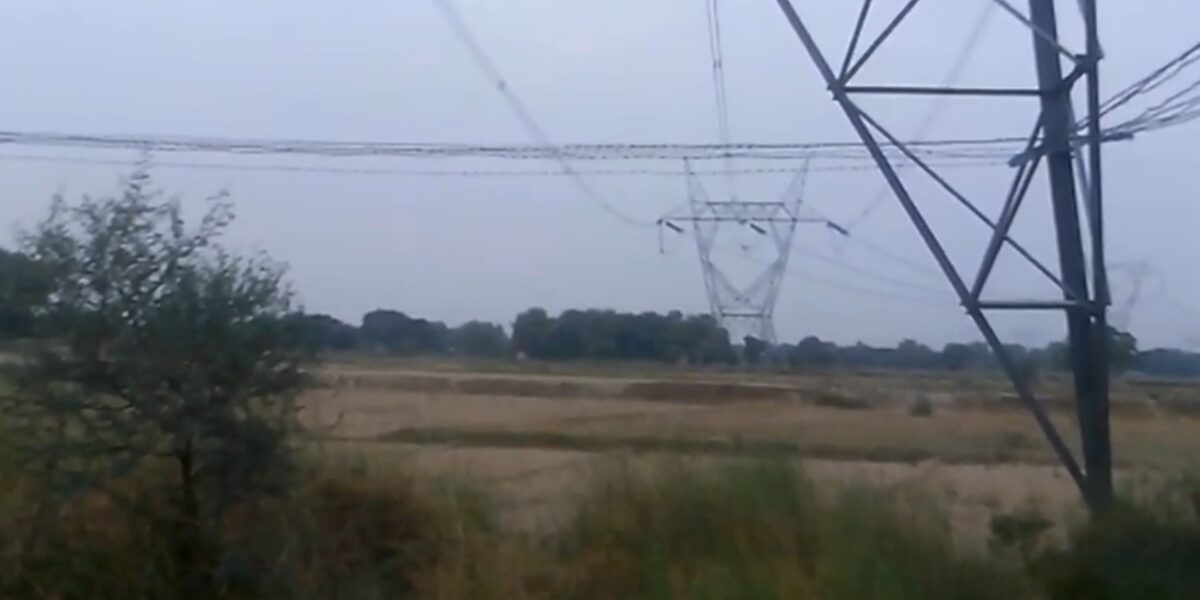Construction work on a new 765kV double-circuit line connecting the Fatehgarh-II and Bhadla-II substations in Rajasthan, is complete, and is ready for commissioning.
This line is part of a transmission scheme officially known as “Transmission system associated with LTA applications from Rajasthan SEZ Part-B” is being implemented under the tariff-based competitive bidding (TBCB) route by Power Grid Corporation of India Ltd.
PGCIL won this project in October 2019 and it is being developed through its wholly-owned subsidiary Powergrid Fatehgarh Transmission Ltd (originally incorporated as “Fatehgarh-II Transco Ltd.”) The project, estimated to cost around Rs.670 crore, aims to evacuate generation from upcoming solar zones in Rajasthan.
Also read: GE Lands Major PGCIL Order For 765kV Transformers And Reactors
The transmission scheme has three components:
- The first component is the 765kV Fatehgarh-II – Bhadla-II D/C line, which is now physically complete. Spanning 187 km, this line involved the construction of 508 tower foundations. As of July 31, 2021, tower erection and stringing was fully complete.
- The second component involves two 765kV bays, each at the Fatehgarh-II and Bhadla-II substation for the aforementioned transmission line. The contracts for both the bay extensions have been placed on Bharat Heavy Electricals Ltd (BHEL). According to the latest status report, civil work and equipment erection is currently underway.
- The third aspect of the project is a 240MVAR switchable line reactor with neutral grounding resistance (NGR) of 400 ohm, on each circuit of the 765kV Fatehgarh-II – Bhadla-II D/C line, at the Fatehgarh-II substation end. While the tenders for this component have been invited, the contract award was pending, as of July 31, 2021.
The overall project was scheduled to commission by December 2020. As such, it is running behind schedule by at least eight months so far.
Background
India has set a target for establishing 175 GW renewable capacity by 2022, which includes 100 GW solar, 60 GW wind generation capacity. To identify ISTS connectivity of renewable energy projects from potential solar energy zones (SEZs) and potential wind energy zones (WEZs) of about 50 GW and 16.5 GW respectively, the Union ministry of new and renewable energy (MNRE), through its order of June 2018, had constituted a sub-committee.
Accordingly, SEZs and WEZs envisaged in seven renewable energy-rich rich states — Tamil Nadu, Andhra Pradesh, Karnataka, Gujarat, Rajasthan, Maharashtra and Madhya Pradesh— were identified by SECI in association with MNRE in consultation with RE power developers.
To ease the implementation of transmission infrastructure, it has been proposed to bifurcate these requirements in two phases. A total of 20 GW solar and 9 GW wind projects has been planned in Phase-I (up to December 2020) and 30 GW solar and 7.5 GW wind has been planned for Phase-II (December 2021).
The implementation of this mega renewable energy evacuation plan is taking place through specific projects, most of them under the tariff-based competitive bidding (TBCB) route.
(Featured photograph for illustration only)



